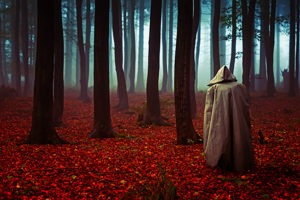
PART I: Legends of The Abbey
By Ted McIntyre
As the crow flies, I live just under four kilometres from Glen Abbey Golf Club in Oakville, Ontario. Fortunately, whatever spirits haunt (or used to haunt) that premises have remained confined to the historic property—more specifically, to the hulking beige stone, red clay-tile-roofed edifice overlooking Sixteen Mile Creek Valley that Golf Canada has essentially called home since 1977.
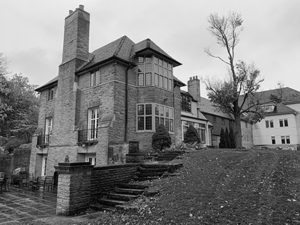 Originally built upon farmland in 1937 by mining magnate André Dorfman, who named his lavish country home RayDor, the estate was sold to the Jesuit fathers in 1953 to serve as a retreat and monastery. A decade later, the property was sold to Clearstream Developments for $1 million, with golf architect Howard Watson laying out the original incarnation of Glen Abbey Golf Club. Jack Nicklaus completely reworked the iconic layout in 1976—his first solo design.
Originally built upon farmland in 1937 by mining magnate André Dorfman, who named his lavish country home RayDor, the estate was sold to the Jesuit fathers in 1953 to serve as a retreat and monastery. A decade later, the property was sold to Clearstream Developments for $1 million, with golf architect Howard Watson laying out the original incarnation of Glen Abbey Golf Club. Jack Nicklaus completely reworked the iconic layout in 1976—his first solo design.
While the Golden Bear may think himself accursed, having never captured a Canadian Open, including an agonizing seven bridesmaid finishes—twice at the Abbey—others too share unnerving experiences that have occurred within the former Dorfman estate.
 Dean Baker, who first worked at Glen Abbey as a teenager, eventually graduating to course superintendent from 1989 to 2000, has a shag bagful of eerie recollections of that imposing building—one that every visitor to Glen Abbey passes on their way to the parking lot, just a dogleg par-4 shy of the clubhouse.
Dean Baker, who first worked at Glen Abbey as a teenager, eventually graduating to course superintendent from 1989 to 2000, has a shag bagful of eerie recollections of that imposing building—one that every visitor to Glen Abbey passes on their way to the parking lot, just a dogleg par-4 shy of the clubhouse.
“The legend goes that it was a Jesuit priest haunting the place,” recalls Baker, now the head superintendent at Burlington G&CC. “Growing up as a kid and being there so long, there were multiple times I had to go into that building for security reasons—mostly in the middle of the night because the alarms would go off. I would always bring my dogs—Labrador Retrievers—with me, because I was scared to death to go in there alone. The minute you walked in, the dogs would go crazy, as though someone was in the building. But there never was.
“There was always an issue of the windows being locked,” Baker remembers. “We’d go over it a thousand times with staff, reminding them that the alarm might go off. Sure enough, someone would always tell me, ‘Everything is closed.’ And then at 2:00 in the morning I’d get a call from our security group: ‘We’ve got a motion detector going off on the second floor.’ Somehow a window would be open and a curtain flapping. Jokingly, we said it was the Glen Abbey ghost. But even though I never physically ran into anybody, I always found the dogs’ behaviour strange. They did not like going in there.”
THE LOCKER DOORS
Baker’s favourite story concerns a one-time bartender at the Champions Club, the former private members club located at the rear of the building. “This guy is as honest as the day is long,” Baker relates. “He always closed the lockers—some didn’t have locks. One night he noticed a couple were open, so he shut them tight and went back to cleaning. When he heard the phone ring downstairs, he went down the spiral staircase to answer it, but there no one on the phone. So he goes back up the stairs, and virtually every locker that didn’t have a lock on it was open 90 degrees. This is when our buddy ran down the stairs, phoned us on the way out and said, ‘Come pick me up right now.’ By his tone, we thought there was a fire, or that someone had died. So we come and get him, and he wouldn’t go back in the building. So we go up there and, yes, the lockers were all open.
“But you always felt when you went into that building, especially at night, that there was someone there. I’d hear stories from others and they were all similar—that there was a presence, someone tapping them on their shoulder.”
Scott Myrden, now an IT specialist, tended bar at the Champions Club in 1981. “I’d hear the odd story from members,” he shares. “One of the older members claimed he knew of a spot where someone was actually buried on the property from the time it was occupied by the Jesuits, and that it was the source of some of the odd things that went on there.
“There was an upstairs area of the club primarily used for events,” Myrden notes. “One time I heard noises above me—you could hear the weight slowly shifting across the floor from one end of the room to the other. So I went upstairs to see if I could help the person, but the room was empty.
“I also remember leaning against the bar one day, reading a book as I waited for members to come in from the course. Someone tapped me on the shoulder and I turned around, but there was nobody there. I looked on the ground, thinking perhaps something had fallen from the ceiling, but the floor was clean. So I kind of threw up my hands and rolled my eyes and said, ‘If you really want to be useful, why don’t you go up to the main clubhouse and tell them to turn the music on!’ In the time it would have taken for someone to actually walk up there, the music came on. That never happened by accident—they never remembered to turn the music on in the members’ club.
THE CARETAKER
“There was a bartender, Jim, at the main clubhouse,” Myrden continues. “He told me of a gentleman who worked as a caretaker at the RCGA building. There was an apartment at the top. The guy was vacuuming one night and looked down toward the library, which was at one end of the second floor. The library was an odd room—you’d walk in there and it felt like the air pressure was higher, like it was pressing down on you. Anyway, the caretaker was looking down at the doors, which were closed, and a figure walked straight through the door toward him. He shut down the vacuum, went to his apartment and sat up all night with the music blaring. He left a note early the next morning that they could mail him his paycheque, because he wasn’t coming back.
“Jim had an experience of his own,” Myrden notes. “He was walking down the road from the main clubhouse after his shift late one night and thought he saw someone moving across the parking lot. He yelled out, knowing that nobody should be on the property on that hour. He jumped in his car and was trying to get his headlights on the person, when the figure ran toward the members club, up a few steps, and right through the closed doors. Jim pulled his car around and went to check, but everything was locked up tight.”
SOMETHING IN THE ATTIC
Bill Paul, former Chief Championship Officer and a longtime Golf Canada employee—43 years, to be exact—worked as a student at the 1977 Canadian Open, the first at ‘The Abbey.’
“You always heard about a ghost,” Paul says. “Stuff like that never really bothered me, but as a person who would often work late at night, well, it’s an old building and you always hear noises. When there are other people in the building, those noises are them. But when there’s no one else in the building, you start to wonder. I didn’t really believe in ghosts there, but I’m not going to lie and say I didn’t ever think about it. Someone might leave a window open every now and then and a door would slam.”
But there was that one time—an autumn evening in the late 1980s. “I stayed late one night and it was probably after 10 p.m.,” Paul recounts. “So I’m working in my office, which was on the west side of the second floor, and I hear somebody in the attic. I knew there was nobody up there, and I swear to God there was no one else left in the building, but I could distinctly hear footsteps above. I got up and listened.”
This was not an animal scurrying through the attic, Paul surmised. The footfalls were too heavy. “I packed up quickly, went down the back staircase, pushed the alarm code in, went to the front door and got out.
“The ghosts were legendary to those who wanted to believe,” Paul continues. “And for some of us who didn’t believe, you certainly heard a sound or two that made you think: ‘Maybe there is something there.’”
Check out all five parts in this ghostly series:
Part I: Legends of the Abbey
Part II: The Algonquin Resort
Part III: War on the Shore: Niagara-on-the-Lake
Part IV: Spirits of the West: The Banff Springs and Jasper Park Lodge
Part V: Ghost Town, B.C.: Victoria and the Spirit of Doris Gravlin
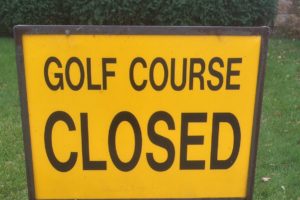
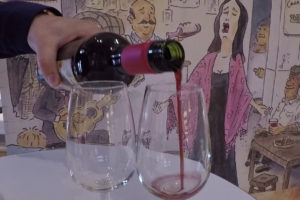
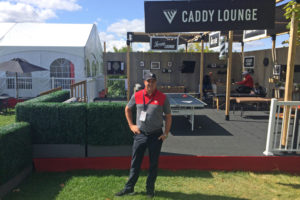

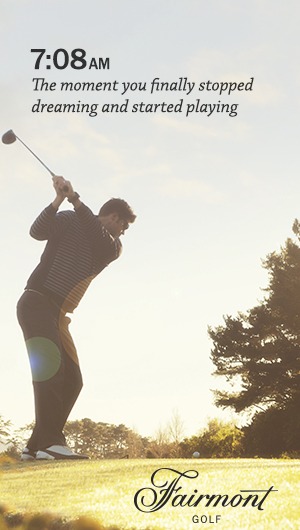
4 Comments
Leave your reply.